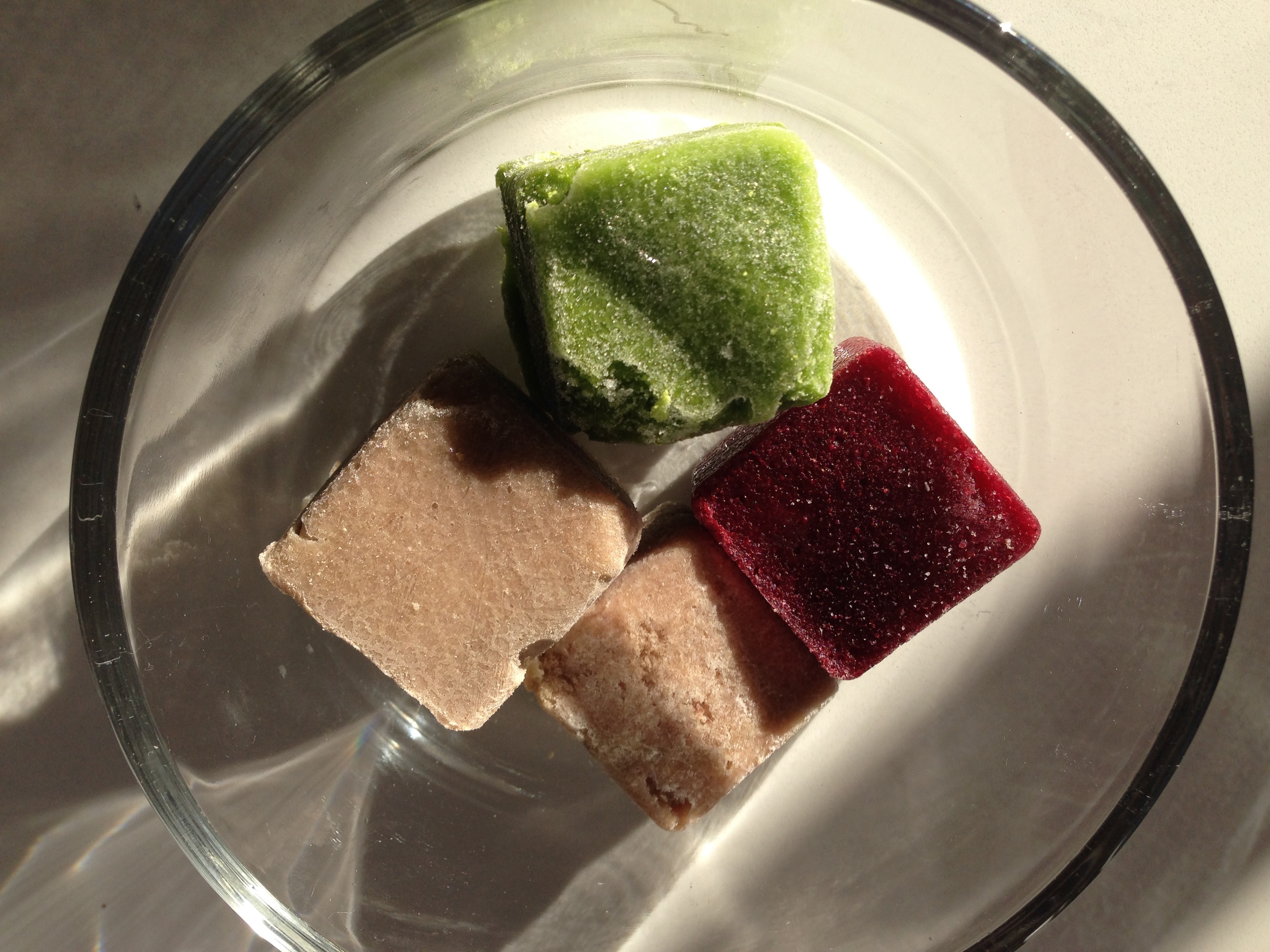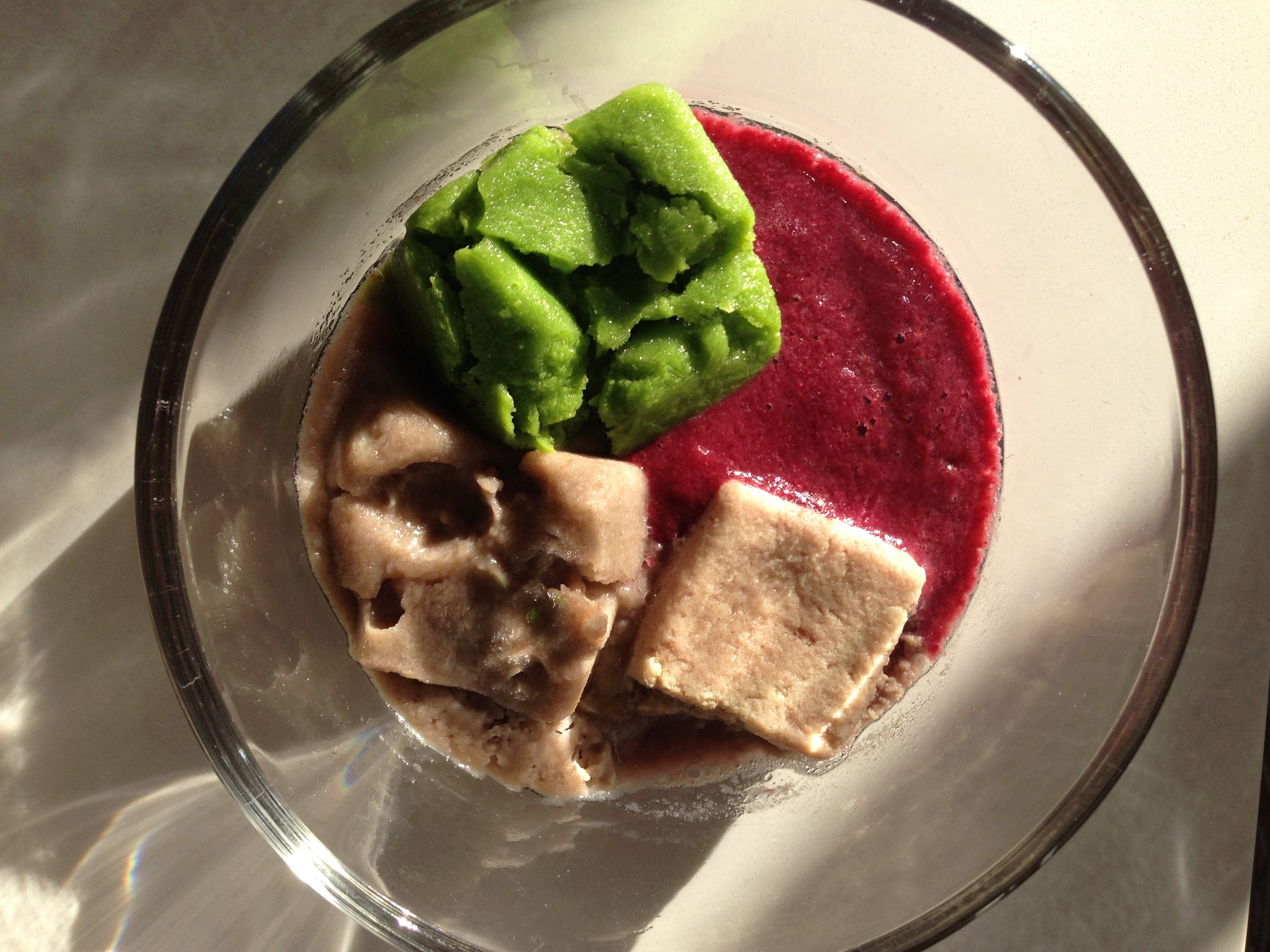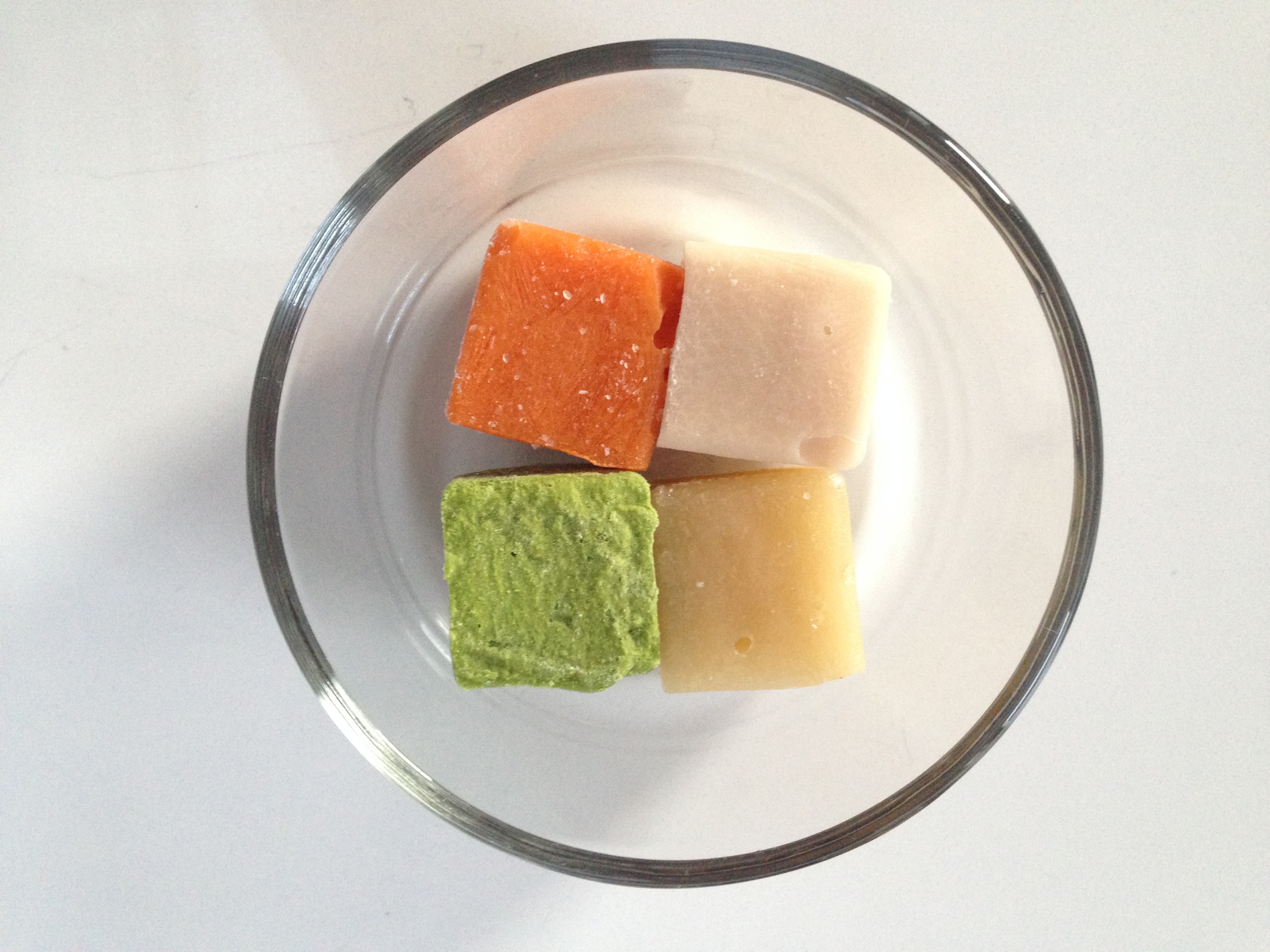I've been proposing some radical cultural changes lately (Christmas in February, ice cream sandwiches in winter), so might as well keep it up. Here goes: culinary schools should make "Baby Food 101" the class aspiring chefs take first.
Why? Because making baby food often involves just one or two ingredients. And, by working with a single ingredient you learn about its nutritional values, how to handle it, cook it in a variety of ways, and, most importantly, how to taste it. Then you mix and match different foods, taste, and continue to learn to taste.
The fledgling chef ought to learn that not only is baby food real food, it is the root of learning to eat and development of taste.
A well-fed kid.
I fed kid number one pretty well, but kid number two is eating even better thanks to what I learned the first go-around. Today I puree raw and cooked foods separately until smooth, transfer them to ice cube trays (Tovolo’s silicon 2 tablespoon cubes are perfect), and freeze them until solid. I store them in sealed freezer bags. When ready to serve, I pull a few from the freezer, microwave them together, and mix. Every meal is different and most are tasty.
Clockwise from top left: sweet potatoes, banana, squash, cannellini beans, turkey, mixed berries, corn, peas.
By having an array of frozen food purees (see photo at right), I can taste which foods work together and which don’t. Banana and avocado work surprisingly well. But banana, avocado, cumin, and garlic don’t. (My brother proved that when last summer he mashed bananas into guacamole.)
Beans, peas, apples, and squash are delicious together. Turkey, berries, peas, and lentils are disgusting. Then again, anything with cooked, salt-free, pureed turkey meat is fairly unpleasant tasting. Fortunately it can be covered up by sweetness and acidity (i.e. sweet potatoes and apples), and spices.
Another lesson learned – mix too many foods together and they all start to taste like banana or some derivative of the fruit. The same goes for adult dinners, like stir-fries or pastas. Add too many vegetables and you start to lose the flavor for any one.
Kid #1 pureeing food for Kid #2. #teachthemyoung.
Below are more baby food making tips. And then I want to hear yours. Please...
Tips for Making Baby Food:
1. Cook foods in as little water as possible. Steam apples, spinach, pears, and prunes. Bake root vegetables. You want to keep as many of the nutrients in the food. Boiling removes a lot.
2. Puree soft foods, like avocado and banana, without cooking them. They oxidize quickly, so freeze asap.
3. During the winter, use frozen vegetables, like peas, corn, and berries.
4. Separately puree cooked or raw foods until smooth. Pour each type into an ice cube tray and freeze until solid. Then pop them out and place in freezer bags. Label might say, “bananas”.
5. When ready to serve, remove a few cubes from the freezer. Place in a microwave safe dish or small pot and heat until melted but not hot. Mix up.
6. Try to combine a protein with a fruit and vegetables (one starch and one green). Maybe some pureed beans with apples, spinach, and squash.
7. Keep other foods on hand: plain whole-milk yogurt, ricotta cheese, cream, baby cereals. They help thicken or cool purees, and they add nutrients.
8. Start babies with rice cereal (it’s the easiest to digest), then move on to oat or wheat cereals.
9. If your baby doesn’t drink formula, give him a Vitamin-D daily supplement. I like Carlson Super Daily D3, which is a drop a day on her food or milk.
10. Avoid salt and sugars. Babies have highly sensitive taste buds. So your idea of salt is a lot more than hers. Also, it can hurt their kidneys and cause dehydration.
11. Use spices. Spices are great way to introduce babies to new and interesting flavors or cover up some unpleasantries like salt-free turkey meat. Cinnamon, clove, and nutmeg can be added raw, but cook cumin and curries with other foods. Herbs ground into a pesto-style paste are a great way to boost flavor.
Artistic expression with ricotta.
12. NO HONEY! It’s the only food doctors say not to feed your kids. And they shouldn’t eat it even when baked into granolas or muffins until they’re one year (my doc says two). Something about botulism. Yikes!
13. Let your kids make a mess. I have such a hard time with this one. I cleaned my son like a maniac, and today he’s a three-year-old OCD neat freak. Learned or genetic? Likely both. Word on the street is that making a mess helps their creativity. Hope I can do better with #2.
14. I hate to spend money on a book that I'll only use once, but First Meals and The Healthy Baby Meal Planner, both by Annabel Karmel are worth it. And, hey, you can always pass them on.
15. Finally, remember, pureeing baby food isn't forever. You make it from six months until they can chew soft foods, at around 9 or 12-months-old. So depending on your kid and his teeth that means roughly three to six months of baby food making. Kid #2, who is 9 months now, is already preferring foods with more texture.







